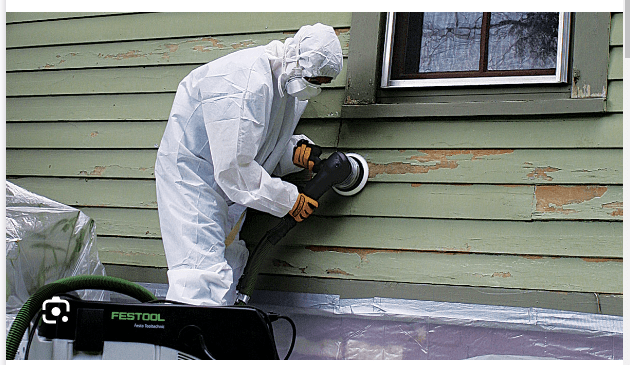
Essential Tips for Contractors and Homeowners
Renovating older homes can be an exciting venture, but it also comes with potential risks, particularly when it involves properties built before the 1978 ban on lead-based paint. The presence of lead paint poses health hazards, especially during renovation activities that can disturb or release lead dust. To protect the health of occupants and comply with regulatory requirements, contractors and homeowners must be aware of and implement proper lead-safe practices. This article provides essential tips to help contractors and homeowners avoid lead paint renovation fines while ensuring a safe and compliant renovation process.
Understanding the Risks:
Lead-based paint, commonly used before 1978, poses health risks when disturbed, sanded, or scraped during renovation or remodeling. Inhaling or ingesting lead dust or chips can lead to lead poisoning, particularly in children and pregnant women. To prevent exposure, contractors and homeowners must take necessary precautions and follow lead-safe work practices to minimize the risk of lead contamination.
Educate Yourself:
Contractors and homeowners should educate themselves about the risks associated with lead-based paint and the regulations in place. Familiarize yourself with the Environmental Protection Agency’s (EPA) Lead Renovation, Repair, and Painting (RRP) Rule, which outlines the procedures and requirements for working safely with lead-based paint. Ensure you understand the legal obligations and fines associated with non-compliance.
Certification and Training:
Contractors must obtain EPA certification to conduct lead-safe renovations in target housing or child-occupied facilities. Completing an EPA-approved training course is mandatory for certification. Homeowners can also benefit from attending lead-safe training courses to understand the risks and learn best practices for minimizing exposure during renovation projects.
Pre-Renovation Assessment:
Before starting any renovation or remodeling project, assess the presence of lead-based paint in the property. Hire a certified lead inspector or risk assessor to conduct a thorough inspection and determine the presence of lead hazards. This assessment will help guide your renovation plans and ensure compliance with safety regulations.
Containment and Safe Work Practices:
During renovation activities, it is crucial to contain the work area to prevent the spread of lead dust. Use heavy-duty plastic sheeting and tape to seal off the area, and consider creating a negative pressure zone using air filtration devices. Implement lead-safe work practices, such as wet methods to minimize dust generation, using HEPA vacuums, and wearing appropriate personal protective equipment (PPE) like gloves, goggles, and respirators.
Safe Waste Disposal:
Proper disposal of lead-contaminated waste is essential to prevent environmental contamination. Collect debris, dust, and paint chips in heavy-duty plastic bags labeled for hazardous waste. Ensure the waste is disposed of at an approved facility following local regulations and guidelines.
Documentation and Record-Keeping:
Maintain thorough documentation of lead-safe work practices, including pre-renovation assessment reports, contractor certifications, and training records. These records serve as evidence of compliance and can help protect you from fines or legal issues in case of an inspection or audit.
Stay Updated with Regulations:
Lead paint regulations and guidelines may evolve over time, so it is crucial to stay updated with any changes. Regularly check the EPA and local health department websites for updates, attend relevant training courses, and join professional networks to stay informed about the latest practices and requirements.
Conclusion:
Avoiding lead paint renovation fines requires a proactive approach to protect the health of occupants and comply with regulatory standards. By educating yourself, obtaining proper certification and training, conducting pre-renovation assessments, implementing lead-safe work practices, and maintaining accurate documentation, contractors and homeowners can ensure a safe and compliant renovation process. Remember, prioritizing lead-safe practices not only avoids fines but also safeguards the well-being of everyone involved and preserves the integrity of our communities.
Reference Link: https://www.cdc.gov/niosh/topics/lead/preventconstruction.html
